Hiring a professional web designer is an important step in creating a successful online presence. However, to get the most out of this investment, it’s crucial to ensure the designer meets your expectations. Here are key steps to ensure you achieve the best results.
1. Clearly Define Your Goals
Before starting the project, outline your objectives. Whether it’s creating an e-commerce site, improving user experience, or enhancing your brand image, knowing your goals helps the designer understand your vision. Be specific about what you want and how you envision the website supporting your business.
2. Choose the Right Designer
Select a web designer who aligns with your project’s requirements. Look for experience in your industry or similar projects. Review their portfolio to see if their design style resonates with your brand. A good designer will also have a strong understanding of user experience (UX) and responsive design principles.
3. Communicate Your Vision
Be clear and detailed when explaining your preferences. Share examples of websites you like, detailing what aspects you find appealing (e.g., color schemes, layout, typography). The more information you provide, the better the designer can translate your ideas into reality.
4. Set Realistic Expectations
Understand that web design is a process that takes time. Discuss timelines upfront and ensure both parties are on the same page regarding deadlines. Be realistic about what can be achieved within the agreed timeframe and budget.
5. Provide Constructive Feedback
Once the designer presents initial designs, review them thoroughly. Provide specific, constructive feedback on what works and what doesn’t. Avoid vague comments like “I don’t like it.” Instead, explain why something doesn’t meet your expectations, whether it’s the design, color choice, or functionality.
6. Ensure Collaboration Throughout the Process
Stay involved during the design process by maintaining open communication. Regular check-ins will allow you to assess progress, offer feedback, and address any issues early. This ensures the final design reflects your vision and goals.
7. Test the Final Product
Once the designer completes the website, test it thoroughly. Check all pages, features, and functionality on different devices and browsers to ensure compatibility. Test loading speed, mobile responsiveness, and user navigation to ensure everything runs smoothly.
8. Plan for Ongoing Updates and Maintenance
Websites require regular updates and maintenance to remain effective. Discuss with the designer the options for ongoing support, whether it’s minor updates, security patches, or content changes. Having a plan in place ensures that the website continues to perform optimally long after launch.
Conclusion
Ensuring that a professional web designer meets your expectations involves clear communication, realistic goal setting, and active collaboration. By following these steps, you’ll be able to guide the designer to create a website that meets your business needs, supports your brand, and delivers a positive user experience.

